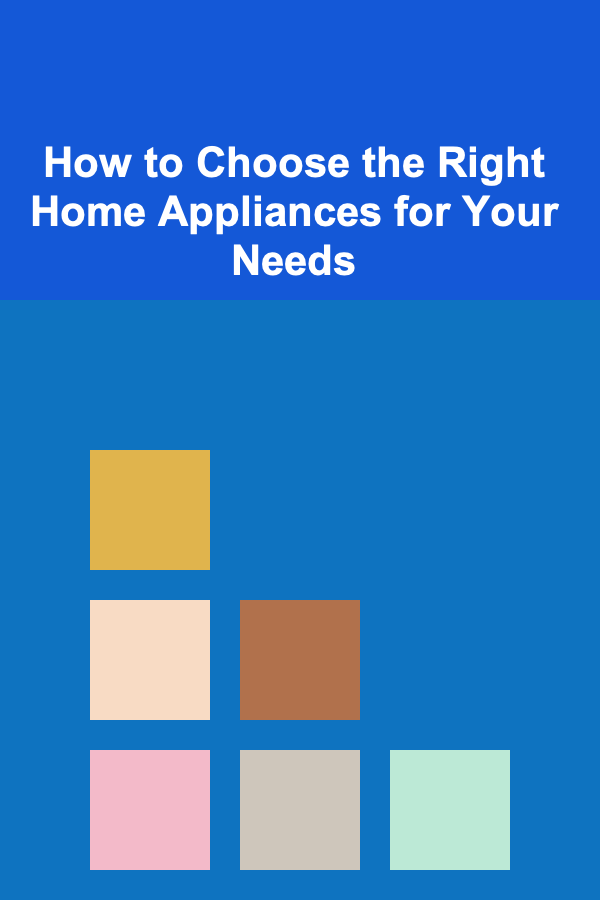
Reducing Sodium Intake: Combating Bloating and Aiding Weight Loss
ebook include PDF & Audio bundle (Micro Guide)
$12.99$11.99
Limited Time Offer! Order within the next:

Understanding the Sodium-Bloating Connection
Sodium, a vital mineral for various bodily functions, plays a crucial role in maintaining fluid balance, nerve impulse transmission, and muscle contraction. However, excessive sodium intake can lead to a myriad of health issues, with bloating being one of the most immediate and noticeable consequences. This section delves into the physiological mechanisms behind the sodium-bloating connection and explores the broader health implications of high sodium consumption.
When we consume an excessive amount of sodium, the body attempts to maintain a specific sodium-to-water ratio. To achieve this, the body retains water. This fluid retention contributes directly to bloating, characterized by a feeling of fullness, tightness, and visible swelling, particularly in the abdomen, hands, and feet. The kidneys, responsible for regulating fluid and electrolyte balance, struggle to filter the excess sodium, leading to the aforementioned water retention.
The renin-angiotensin-aldosterone system (RAAS) is a hormonal system that regulates blood pressure and fluid balance. High sodium intake activates the RAAS, leading to increased aldosterone secretion. Aldosterone promotes sodium reabsorption in the kidneys, further exacerbating water retention and bloating. This system, while essential for survival in situations of sodium deficiency, becomes detrimental when sodium intake is consistently high.
Furthermore, high sodium levels can affect the permeability of cell membranes, disrupting the delicate balance of electrolytes within and outside cells. This disruption can lead to fluid shifts and contribute to cellular swelling, further contributing to the feeling of bloating.
Beyond bloating, chronic high sodium intake is linked to serious health problems. The most well-known is hypertension (high blood pressure). Increased blood volume due to water retention puts extra strain on the heart and blood vessels, leading to elevated blood pressure. Over time, this can increase the risk of heart disease, stroke, and kidney damage.
Moreover, high sodium diets can interfere with calcium absorption and excretion, potentially increasing the risk of osteoporosis, particularly in older adults. Studies have also suggested a possible link between high sodium intake and an increased risk of certain types of cancer, particularly stomach cancer.
Therefore, understanding the intricate relationship between sodium and fluid balance is crucial for managing bloating and protecting long-term health. Reducing sodium intake is not merely about aesthetic improvements; it's a proactive step towards preventing serious chronic diseases.
Sodium and Weight Loss: An Indirect Relationship
While sodium intake doesn't directly burn fat or build muscle, it plays an indirect but significant role in weight loss efforts. Understanding this nuanced relationship is crucial for individuals seeking to shed pounds and maintain a healthy weight.
The primary way sodium affects weight loss is through its influence on water retention. As previously discussed, high sodium intake leads to fluid retention, which can manifest as a temporary increase in body weight. This "water weight" can be discouraging for individuals on a weight loss journey, even if they are making progress in reducing body fat.
Reducing sodium intake can lead to a rapid decrease in water weight, resulting in a noticeable slimming effect. This immediate result can be highly motivating, encouraging individuals to continue with their diet and exercise plans. However, it's important to remember that this initial weight loss is primarily due to fluid loss, not fat loss. The real weight loss journey involves reducing body fat through caloric deficit and increased physical activity.
Furthermore, many high-sodium foods are also highly processed and calorie-dense. Processed foods often contain added sugars, unhealthy fats, and artificial ingredients, contributing to weight gain and hindering weight loss efforts. By consciously reducing sodium intake, individuals are often forced to make healthier food choices, such as opting for fresh, whole foods instead of processed alternatives. This shift towards healthier eating habits can significantly contribute to long-term weight management.
Consider the typical American diet, which is often laden with processed foods, fast food, and restaurant meals. These options are notoriously high in sodium and calories. Regularly consuming these foods can lead to a vicious cycle of weight gain, water retention, and increased cravings for unhealthy foods.
Moreover, excessive sodium intake can exacerbate insulin resistance, a condition where the body's cells become less responsive to insulin, the hormone that regulates blood sugar levels. Insulin resistance can lead to elevated blood sugar levels, which can contribute to weight gain, particularly around the abdominal area. Reducing sodium intake, along with other lifestyle modifications, can help improve insulin sensitivity and promote weight loss.
Finally, while not directly related to weight loss, reducing sodium intake can improve overall health and well-being, making it easier to stick to a healthy lifestyle. Lowering blood pressure, reducing bloating, and improving energy levels can all contribute to a more positive outlook and increased motivation to maintain a healthy weight.
In conclusion, while reducing sodium intake is not a magic bullet for weight loss, it plays a crucial role in reducing water retention, promoting healthier food choices, and improving overall health, all of which contribute to successful weight management.
Identifying Hidden Sodium Sources
One of the biggest challenges in reducing sodium intake is identifying hidden sources of sodium in our diets. Many processed foods, restaurant meals, and even seemingly healthy foods can be surprisingly high in sodium. This section highlights common culprits and provides practical strategies for uncovering hidden sodium sources.
The most obvious sources of sodium are table salt and salty snacks like chips, pretzels, and crackers. However, these are not the only, and often not the largest, contributors to our daily sodium intake. The majority of sodium we consume comes from processed foods, where it is added for preservation, flavor enhancement, and texture improvement.
Here are some common hidden sodium sources:
- Processed Meats: Deli meats, bacon, sausage, hot dogs, and ham are notoriously high in sodium. The sodium is used to cure the meat and prevent spoilage.
- Canned Goods: Canned soups, vegetables, beans, and fruits often contain added sodium to preserve their shelf life.
- Frozen Meals: Frozen entrees, pizzas, and convenience foods are frequently loaded with sodium to enhance flavor and extend their freezer life.
- Sauces and Condiments: Soy sauce, ketchup, mustard, salad dressings, and barbecue sauce can contribute a significant amount of sodium to your diet.
- Breads and Baked Goods: Bread, bagels, rolls, and pastries can contain surprisingly high levels of sodium, even if they don't taste particularly salty.
- Cheese: Many types of cheese, especially processed cheeses, are high in sodium.
- Restaurant Meals: Restaurant dishes, especially those from fast food chains, are often loaded with sodium to enhance flavor and make them more palatable.
Reading food labels carefully is the most effective way to identify hidden sodium sources. Pay attention to the "Nutrition Facts" panel and look for the "Sodium" content. The Dietary Guidelines for Americans recommend limiting sodium intake to less than 2,300 milligrams per day. Keep in mind that the sodium content listed on the label is per serving, so be sure to adjust your calculations based on the actual amount you consume.
Be wary of terms like "sodium-free," "low sodium," "reduced sodium," and "no salt added." These terms have specific legal definitions, but it's still important to check the actual sodium content on the label to ensure it meets your dietary needs.
Here's a breakdown of what those labels mean:
- Sodium-free: Less than 5 milligrams of sodium per serving.
- Very low sodium: 35 milligrams or less of sodium per serving.
- Low sodium: 140 milligrams or less of sodium per serving.
- Reduced sodium: At least 25% less sodium than the regular version.
- No salt added: No salt is added during processing, but the product may still contain naturally occurring sodium.
Beyond food labels, be mindful of the ingredients list. Ingredients like monosodium glutamate (MSG), sodium benzoate, and sodium nitrate are all sources of sodium. The higher they appear on the list, the more of them the product contains.
When eating out, ask the restaurant staff about the sodium content of dishes and request that they prepare your food with less salt. Opt for steamed, grilled, or baked options instead of fried or heavily sauced dishes. Be cautious of condiments and sauces, and ask for them on the side so you can control the amount you use.
By becoming a savvy label reader and making informed food choices, you can effectively identify and minimize your exposure to hidden sodium sources and significantly reduce your overall sodium intake.
Strategies for Reducing Sodium Intake
Successfully reducing sodium intake requires a multi-faceted approach that involves dietary modifications, mindful eating habits, and a commitment to cooking at home. This section provides practical strategies and tips for lowering sodium consumption and achieving long-term health benefits.
- Cook at Home More Often: Preparing your own meals gives you complete control over the ingredients and seasonings you use. This allows you to significantly reduce the amount of sodium compared to eating out or consuming processed foods.
- Choose Fresh, Whole Foods: Focus on incorporating fresh fruits, vegetables, lean proteins, and whole grains into your diet. These foods are naturally low in sodium and provide essential nutrients.
- Read Food Labels Carefully: As previously discussed, become a savvy label reader and pay attention to the sodium content of all packaged foods. Compare different brands and choose the options with the lowest sodium levels.
- Limit Processed Foods: Minimize your consumption of processed meats, canned goods, frozen meals, and salty snacks. These foods are often laden with sodium and other unhealthy additives.
- Rinse Canned Goods: If you use canned beans, vegetables, or other items, rinse them thoroughly under running water to remove some of the sodium.
- Use Herbs and Spices: Experiment with a variety of herbs, spices, and citrus juices to flavor your food instead of relying on salt. Garlic powder, onion powder, black pepper, paprika, cumin, oregano, and lemon juice are all excellent options.
- Make Your Own Sauces and Dressings: Commercially prepared sauces and dressings are often high in sodium. Make your own versions at home using fresh ingredients and low-sodium alternatives.
- Reduce Salt Gradually: Suddenly cutting out all salt can be difficult and may lead to cravings. Gradually reduce the amount of salt you add to your food over time, allowing your taste buds to adjust.
- Use Low-Sodium or No-Salt-Added Products: When available, choose low-sodium or no-salt-added versions of common foods like broth, sauces, and condiments.
- Be Mindful When Eating Out: Ask restaurant staff about the sodium content of dishes and request that your food be prepared with less salt. Choose steamed, grilled, or baked options instead of fried or heavily sauced dishes.
- Avoid Adding Salt at the Table: Resist the temptation to add salt to your food before tasting it. You may find that it's already adequately seasoned.
- Increase Potassium Intake: Potassium helps to counter the effects of sodium on blood pressure and fluid balance. Good sources of potassium include bananas, sweet potatoes, spinach, and avocados.
- Stay Hydrated: Drinking plenty of water helps your kidneys function properly and can help to flush out excess sodium.
- Be Patient and Persistent: It takes time for your taste buds to adjust to a lower-sodium diet. Be patient and persistent, and eventually you will find that you no longer crave salty foods.
Transitioning to a low-sodium diet may initially seem challenging, but with planning and persistence, it can become a sustainable lifestyle change. The long-term health benefits, including reduced bloating, lower blood pressure, and a decreased risk of chronic diseases, are well worth the effort.
Sample Low-Sodium Meal Plan
To help you get started on your journey to reduce sodium intake, here's a sample low-sodium meal plan. This is just a suggestion, and you can adapt it to your own preferences and dietary needs.
Day 1
- Breakfast: Oatmeal with berries and unsalted nuts. Use water or unsweetened almond milk instead of dairy milk.
- Lunch: Salad with grilled chicken or tofu, mixed greens, vegetables, and a homemade vinaigrette dressing (olive oil, vinegar, herbs, and spices).
- Dinner: Baked salmon with roasted vegetables (broccoli, carrots, and sweet potatoes seasoned with herbs and spices).
- Snacks: Fresh fruit (apple, banana, or orange), unsalted nuts, or plain yogurt with berries.
Day 2
- Breakfast: Scrambled eggs with spinach and mushrooms, seasoned with pepper and garlic powder.
- Lunch: Leftover baked salmon and roasted vegetables.
- Dinner: Lentil soup made with low-sodium vegetable broth, vegetables, and herbs and spices.
- Snacks: Baby carrots with hummus (made with no salt added), or a small handful of unsalted trail mix.
Day 3
- Breakfast: Smoothie made with spinach, banana, berries, and unsweetened almond milk.
- Lunch: Turkey lettuce wraps with avocado, sprouts, and a drizzle of olive oil and lemon juice. Use low-sodium turkey breast.
- Dinner: Chicken stir-fry with brown rice and plenty of vegetables (broccoli, peppers, onions, and carrots), seasoned with ginger, garlic, and a low-sodium soy sauce alternative.
- Snacks: Hard-boiled egg, or a small apple with almond butter (no salt added).
Important Considerations:
- Hydration: Drink plenty of water throughout the day.
- Portion Control: Be mindful of portion sizes to support weight loss efforts.
- Variety: Vary your meals and snacks to ensure you are getting a wide range of nutrients.
- Seasoning: Experiment with different herbs, spices, and citrus juices to enhance the flavor of your food without adding salt.
- Read Labels: Always check food labels to ensure you are staying within your target sodium range.
This meal plan is a starting point. Feel free to adapt it to your own preferences and dietary needs. The key is to focus on fresh, whole foods, limit processed foods, and use herbs and spices to enhance flavor without adding salt.
Long-Term Strategies and Maintenance
Reducing sodium intake is not a one-time fix, but rather a lifestyle change that requires ongoing commitment and adaptation. This section outlines strategies for maintaining a low-sodium diet long-term and addressing potential challenges.
Make Gradual Changes: As mentioned earlier, avoid making drastic changes to your diet overnight. Gradually reduce your sodium intake over time to allow your taste buds to adjust and prevent cravings.
Develop Healthy Habits: Focus on building healthy habits that will support your low-sodium lifestyle. This includes cooking at home more often, reading food labels carefully, and choosing fresh, whole foods over processed alternatives.
Plan Ahead: Plan your meals and snacks in advance to avoid impulsive decisions that could lead to high-sodium choices. Prepare a grocery list and stick to it when you go shopping.
Be Prepared When Eating Out: Before going to a restaurant, check the menu online to see if there are low-sodium options available. If not, ask the staff about the sodium content of dishes and request that your food be prepared with less salt. Consider ordering simple dishes like grilled fish or chicken with steamed vegetables.
Stay Informed: Continue to learn about sodium and its impact on your health. Read articles, listen to podcasts, and consult with a registered dietitian to stay up-to-date on the latest recommendations and strategies.
Don't Be Discouraged by Setbacks: Everyone slips up occasionally. If you have a day where you consume more sodium than you intended, don't beat yourself up about it. Simply get back on track the next day.
Find Support: Enlist the support of family, friends, or a support group to help you stay motivated and accountable. Sharing your experiences and challenges with others can make the journey easier.
Monitor Your Progress: Track your sodium intake using a food diary or a mobile app. This can help you identify areas where you can make improvements and stay on track towards your goals.
Celebrate Your Successes: Acknowledge and celebrate your progress along the way. This will help you stay motivated and reinforce your commitment to a low-sodium lifestyle.
Address Potential Challenges: Be aware of potential challenges that could derail your efforts, such as travel, holidays, and social events. Plan ahead and develop strategies for navigating these situations while staying within your sodium limits.
Consider Consulting a Professional: If you are struggling to reduce your sodium intake or manage your bloating or weight, consider consulting with a registered dietitian or a healthcare professional. They can provide personalized guidance and support to help you achieve your goals.
Maintaining a low-sodium diet is a long-term commitment that requires ongoing effort and adaptation. However, the health benefits are well worth the effort. By following these strategies and staying persistent, you can successfully reduce your sodium intake, combat bloating, aid weight loss, and improve your overall health and well-being.
Reading More From Our Other Websites
- [Home Renovating 101] How to Maximize Storage in Small Spaces During a Home Renovation
- [Home Rental Property 101] How to Handle the Eviction Process in a Home Rental Property Responsibly
- [Home Lighting 101] How to Set the Right Lighting for a Dinner Party
- [Polymer Clay Modeling Tip 101] Mastering Texture: Pro Tips for Adding Depth to Your Polymer Clay Creations
- [Home Family Activity 101] How to Organize a Family Movie Marathon at Home
- [Biking 101] Bike Pump Maintenance: How to Keep Your Pump in Top Condition
- [Hiking with Kids Tip 101] Family-Friendly Hikes: A Beginner's Guide for Young Explorers
- [Personal Finance Management 101] How to Set Financial Goals as a Couple and Achieve Them Together
- [Gardening 101] Zone‑Smart Gardening: Matching Plants to Your Local Climate Classification
- [Home Storage Solution 101] How to Set Up a Closet Organization System for Maximum Storage

How to Choose the Right Home Appliances for Your Needs
Read More
How to Create a Monthly Investment Plan
Read More
How to Personalize Your Study Space with DIY Decor
Read More
How to Repurpose Old Furniture for Laundry Storage
Read More
How to Engage the Community in the Planning Process
Read More
10 Tips for Using Your Memory Keeping Planner to Document Everyday Moments
Read MoreOther Products

How to Choose the Right Home Appliances for Your Needs
Read More
How to Create a Monthly Investment Plan
Read More
How to Personalize Your Study Space with DIY Decor
Read More
How to Repurpose Old Furniture for Laundry Storage
Read More
How to Engage the Community in the Planning Process
Read More